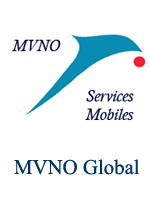
Many articles have suggested Connected Car is the next killer innovation for the automotive industry, ahead of the autonomous car. That is a big opportunity for new services revenues for automakers and an opportunity for non automotive players such as Silicon Valley companies and telecom operators to enter the game and dispute those revenues to OEMs.
1- The offering implication
Connected Services have become business as usual. When you visited Paris Motor Show this October 2016 indeed you did not see specific attractions explaining what are connected services anymore. People have become more and more aware of those and now require connected services for their cars.
However, connected services have become a key differentiator when consumers are picking their next car. Brand loyalty seems not to be able to counter this wave. The McKinsey consumer study 2015 vs 2014 already showed that 37% of consumers declare they would switch to another manufacturer, if it was the only one offering a car with full access to apps, data and media, an 85% increase in 2015 compared to 2014.
2- The data implication
Car manufacturers should however understand the consequences of such surge in consumer data requirements.
A recent study by Juniper Research shows that connected cars would generate 6000 Pentabytes of cellular traffic worldwide by 2021. And by 2021, according to another study by BI Intelligence, there will be 380 million connected vehicles worldwide. This would mean cellular traffic amounting in average to 16.5 Gigabytes per car per year.
This is a huge amount and the car industry will generate by far the largest volumes of the Internet of Things in the foreseeable future. But the costing of cellular will be at stake: in view of the very large volumes generated, OEMs would need to rely on cellular services that would be cost effective. Subcontracting to mobile operators was OK when volumes were low, but the paradigm is changing, and OEMs should find innovative models to achieve such cost effectiveness.
There are ways to achieve such cost effectiveness, but OEMs need to adopt disruptive models, such as a Full MVNO model (Mobile virtual network operator with its own core network)
We have experience that the Full MVNO model would allow OEMs to achieve such cost effectiveness while addressing key strategic and operational issues:
– Independence from mobile operators
– Enhanced access security
– Data privacy
– Direct relations with end customers
– Better network coverage
The automotive industry is facing an incredibly high rise of data traffic ahead. It needs to switch its business model to get mastered, affordable and secured data mobile services for the connected car.
Eric Aroule
Georges-Harald Bernard
Founders, MVNO Global
Copyright
The entire contents placed on the www.MVNO-Global.com site is the exclusive property of Georges-Harald Bernard. All rights of reproduction or representation of these are reserved.
Pingback: The Connected Car as per Hyundai USA: a game changer? | MVNO-Global